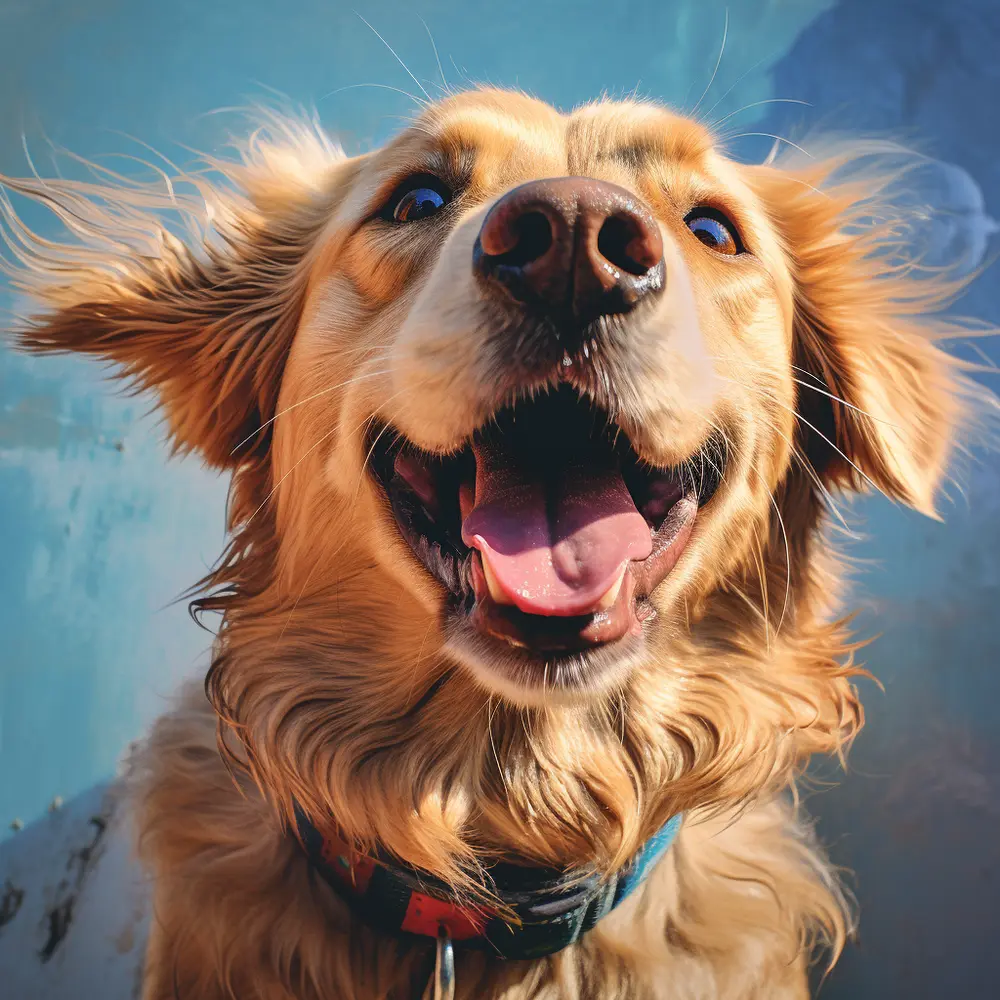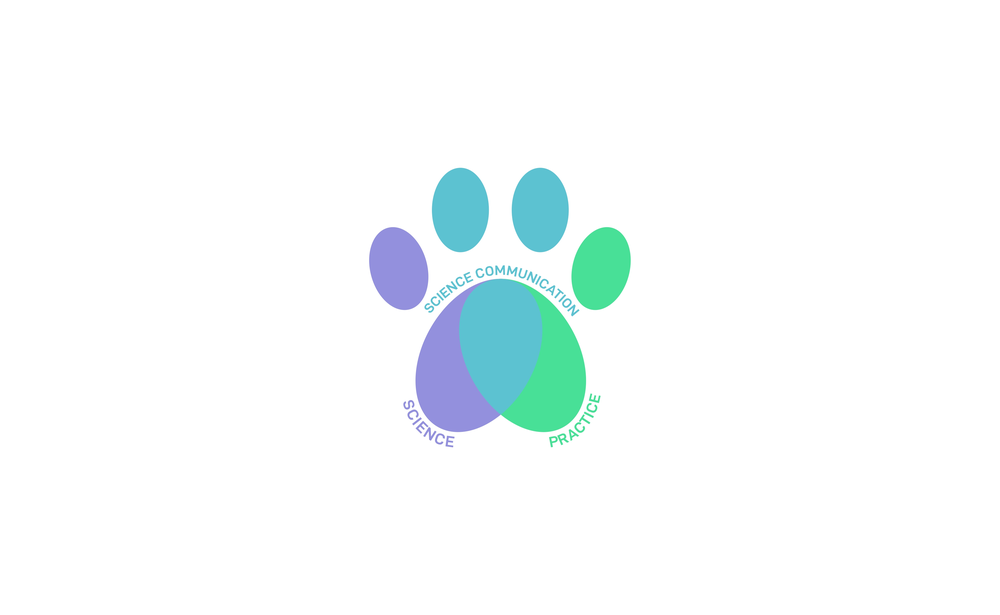Table of Contents:
Understanding Dog Panting When Not Hot
Panting is a normal behaviour for dogs, serving as their primary method for regulating body temperature. Unlike humans who sweat across the surface of their skin, dogs release heat primarily through their mouth and the evaporation of moisture from their tongue and respiratory tract. However, when we observe our furry friends panting in the absence of high temperatures or physical exertion, it may be a signal that something else is affecting them.
It's important to distinguish between normal panting and abnormal panting. Normal panting typically happens after exercise or in warm weather and is a healthy way for dogs to cool down. Abnormal panting, on the other hand, is out of context with the dog's activity level or the environmental conditions. It may have an unusual pattern or sound, does not resolve as rapidly, and can indicate an underlying health issue.
To properly understand why your dog is panting when not hot, it's crucial to become familiar with their typical breathing patterns and behaviours. This knowledge will enable you to quickly spot any deviations that may warrant closer attention or a trip to the veterinarian. Being vigilant about this small detail can make a significant difference in managing your dog's health and well-being.
Common Reasons for Non-Heat Related Panting in Dogs
- Stress, Anxiety, or Excitement: Emotional responses can trigger dogs to pant. Situations such as car rides, loud noises, or unfamiliar environments may lead to an increase in breathing rate.
- Pain: Dogs might pant excessively if they are in discomfort, whether from a chronic illness or due to an injury that has gone unnoticed.
- Breed-Specific Characteristics: Some breeds, particularly those with short snouts like Bulldogs or Pugs, may pant more often due to their anatomy affecting their breathing.
- Medical Conditions: Several health issues, such as heart disease, lung problems, or anaemia, can cause a dog to pant more as the body attempts to increase oxygen flow.
- Medications: Certain drugs, especially steroids or pain medications, can lead to side effects that include increased panting.
Observing the circumstances and accompanying symptoms is essential to identify non-heat-related panting in dogs. If panting is excessive and does not subside with rest or continues to occur without an obvious trigger, it could be a sign of a more serious condition. In such cases, consulting with a vet is advisable to ensure proper care and treatment.
Understanding Dog Panting Behaviours
| Good | Bad |
|---|---|
| Panting helps dogs cool down | Excessive panting can be a sign of health issues |
| It's a normal behaviour for dogs to pant after exercise | Over-panting can lead to dehydration if not monitored |
| Panting can indicate excitement/arousal or positive emotional states | Some dogs might pant due to anxiety or stress |
| It's a way for dogs to regulate body temperature | Chronic panting might be a symptom of heart disease |
The Role of Stress and Anxiety in Dog Panting
Just as humans experience physiological and behavioural changes in response to stress and anxiety, dogs, too, can show visual signs, with panting being a common manifestation. Emotional distress can cause a dog to pant more rapidly and shallowly. This type of panting is often accompanied by other behaviours such as pacing, whining, or licking excessively.
Dogs may experience stress and anxiety for a variety of reasons, including separation anxiety, noise phobias (e.g. due to fireworks or thunderstorms), or changes in their environment. Providing a stable and secure setting can help minimize these feelings and reduce the incidence of stress-induced panting. Identifying and addressing the source of the stress is paramount, and in some cases, the guidance of a professional dog trainer or veterinary behaviourist may be beneficial.
Furthermore, techniques to help soothe and relax your dog can help manage their anxiety. These methods may include:
- Engaging in Gentle Exercise: Activities like slow walks can help alleviate stress.
- Using Calming Aids: Products such as pheromone diffusers emit scents that can have a soothing effect on dogs. Similarly, special garments designed to provide constant, gentle pressure (akin to a reassuring hug) can be comforting.
- Training with Specific Techniques: This includes desensitization and counter-conditioning. Desensitization involves gradually exposing your dog to the source of their fear in a controlled way, while counter-conditioning means associating the fear source with positive experiences, like treats or playtime.
Managing stress and anxiety is essential for your dog's overall health, as prolonged or extreme anxiety can have cascading effects, potentially leading to more significant health concerns.
Pain and Discomfort: Hidden Causes of Your Dog's Panting
Another less obvious reason why a dog may pant when not hot is due to pain or discomfort. Unlike humans, dogs cannot verbally express their pain, so it's up to the careful observation of pet owners to recognize other signs. Panting that is due to pain may also be seen with changes in behaviour, such as reluctance to move, loss of appetite, or increased aggression.
Chronic conditions like arthritis, dental issues, or internal injuries could be contributing to your dog's discomfort. It is also possible that recent surgery or trauma could lead to increased panting as the dog copes with after-effects. If your dog shows sudden bouts of panting along with signs of distress, it may be experiencing acute pain.
Appropriate and timely veterinary care is crucial to address the underlying cause of pain. Your vet might recommend:
- Physical exams and diagnostic tests to determine the pain's source
- Pain management strategies including medications, physical therapy, or alternative treatments like acupuncture
- Surgery, if necessary, to resolve any physical ailments leading to discomfort
Being attuned to your dog's normal behaviours and quick to notice any irregular panting can lead to early detection and treatment of pain-related issues. Prompt action can significantly enhance your dog's quality of life.
Respiratory and Cardiovascular Issues Leading to Panting
Underlying respiratory and cardiovascular issues are significant health concerns that can lead to increased panting in dogs. A compromised respiratory system means less oxygen is circulated throughout the body, prompting a dog to pant more to try to increase the airflow and oxygen intake. Similarly, heart conditions can hinder the efficient circulation of blood, leading to panting as the body attempts to compensate for the reduced oxygenation.
Conditions such as pneumonia, bronchitis, or heartworm can severely affect a dog's respiratory health. As for cardiovascular health, ailments like heart disease or heart failure are well-known culprits that prompt increased panting. Symptoms of these conditions may also include coughing, lethargy, and fluid retention.
To diagnose and address these serious health issues, a veterinary visit is essential. Diagnostic approaches might include:
- Chest X-rays to visualize the heart and lungs
- Echocardiograms for a detailed view of heart function
- Blood tests to check for heartworm and other conditions
The treatment will vary based on the specific diagnosis but may involve medications to manage heart or lung conditions, changes in diet, restricted exercise, or, in severe cases, surgery. Identifying and treating respiratory and cardiovascular problems early can help manage symptoms, including problematic panting, and improve your dog's prognosis.
Recognising Abnormal Panting: When to Worry
Abnormal panting can be a sign that warrants concern. Recognizing the difference between normal and abnormal panting is critical for your dog's health. Indicators that the panting may not be normal include a pattern that persists longer than expected, occurs without an obvious trigger, or is accompanied by a sound that isn't typical for your dog.
Unusual panting may also be paired with other alarming signs such as excessive thirst, extreme fatigue, or uncharacteristic behaviour changes. These symptoms can point to potentially serious health problems. Abnormal panting can be especially concerning if it appears suddenly or if your dog is a puppy, as they are both less capable of regulating their body temperature and more susceptible to respiratory distress.
If you notice any of these signs, it is time to consult your vet urgently:
- Panting that starts unexpectedly and for no apparent reason
- Panting that is more intense or lasts longer than after typical exercise or excitement
- Panting accompanied by a change in tongue or gum colour to blue or white, indicating a lack of oxygen
Do not ignore these warning signs. Early detection and intervention can be crucial in preventing more severe issues or even saving your dog's life.
How to Monitor Your Dog's Breathing Patterns
Keeping a vigilant eye on your dog's breathing patterns is crucial for maintaining their health. Learning what is normal for your dog is the first step to recognizing any issues. A resting dog typically takes between 10 to 30 breaths per minute. You should monitor for any deviations from this norm.
Here are some tips for effectively monitoring your dog's breathing:
- Take note of the average rate of breaths per minute when your dog is relaxed and at rest.
- Observe the depth of breathing. Shallow, rapid breaths may indicate distress, while deep breaths are usually more relaxed.
- Watch for abnormal sounds like wheezing, which may suggest a respiratory issue.
- Check for consistent breathing patterns. Irregularity in breathing rhythm can be a sign to consult a vet.
- Be aware of the context; panting after exercise or during warm weather is expected, but panting at rest or in cool conditions is not.
It's beneficial to keep a log of your observations, especially if any abnormalities are detected. This information can be extremely helpful to your vet in diagnosing potential problems. Always remember, when in doubt, seeking professional advice is the safest course of action to ensure the well-being of your canine friend.
The Impact of Breed on Panting: Brachycephalic Dogs
The anatomy of a dog's face plays a significant role in its breathing efficiency, with brachycephalic dogs—those with short noses and flat faces—being particularly prone to panting issues. Breeds such as Bulldogs, Pugs, and Boston Terriers have compact airways, which can make breathing more laborious, leading to increased panting, even when they are not overheated or stressed.
Due to their anatomy, these breeds are at a higher risk for a condition known as brachycephalic obstructive airway syndrome (BOAS). The syndrome can severely inhibit a dog's ability to breathe comfortably and lead to chronic panting. Potential signs related to BOAS include:
- Difficulty breathing, especially in humid or hot weather
- Noisy breathing even during light activities
- Sleeping with the head elevated to facilitate breathing
It's important for owners of brachycephalic breeds to monitor their dogs closely for signs of respiratory distress and take preventive measures such as avoiding excessive exercise, particularly in warm conditions. Regular check-ups with the vet can help manage any respiratory conditions your dog might have. Surgical intervention may sometimes be recommended when lifestyle changes are not enough to alleviate the symptoms.
Medications and Treatments That May Cause Panting
Certain medications and treatments prescribed for dogs can have side effects that include an increase in panting. Steroid-based drugs, often used for their anti-inflammatory properties, are a common cause of excessive panting. If your dog is under steroid treatment and you notice an uptick in panting, this may not be a cause for immediate concern, but it should be monitored.
Other medications, including some pain relief and anti-anxiety drugs, can also lead to increased breathing rates. Dogs under such medication should be observed for any changes in their panting, particularly when these medications are first introduced or when dosages are altered.
If you suspect that your dog's panting is related to a medication:
- Contact your vet to confirm whether panting is a known side effect of the medication.
- Discuss the severity of panting and whether the medication regimen should be adjusted.
- Never alter your dog's medication without professional guidance.
Balancing the benefits of a treatment against its side effects is crucial. Your vet may suggest alternative therapies or adjust the dosage to reduce panting while still effectively managing your dog's condition.
Preventive Measures: Keeping Your Dog Cool and Calm
Prevention is key for limiting stress-related panting and keeping your dog comfortable during warmer climates. Ensuring your dog remains cool and calm can help prevent unnecessary panting and potential heat-related stress. There are several steps you can take to help your dog maintain a regular breathing pattern.
For temperature management:
- Provide a cool, shaded area for your dog during the hot parts of the day.
- Ensure access to fresh, cool water at all times to prevent dehydration.
- Use fans, air conditioning, or damp towels to help lower your dog's body temperature if needed.
For stress reduction:
- Establish a routine to provide stability for your dog.
- Introduce calming techniques, such as gentle massages or quiet time together, to help alleviate anxiety.
- Consider environmental enrichment, such as toys and puzzles, to keep your dog's mind occupied and reduce stress.
Regular exercise is also important, but be mindful of the weather conditions and avoid intense physical activity during peak heat times. By adopting these preventive measures, you can help ensure that your dog stays healthy, happy, and free from excessive panting due to heat or anxiety.
When to Consult a Vet: Dog Panting When Not Hot
Identifying the right time to seek veterinary attention for your dog’s panting can make a crucial difference in their health. If the panting is inconsistent with the dog's usual behaviour, environment, or activity level, it’s advisable to consult with a professional.
Key indicators that a vet visit is in order include:
- Panting that persists without clear reason or is affecting your dog’s quality of life
- Any accompanying signs of illness, such as changes in appetite, vomiting, diarrhea, or unusual lethargy
- Evidence of pain or discomfort, such as wincing, whimpering, or reluctance to be touched
A proactive approach to your dog’s health entails regular check-ups, which can help catch early signs of potential issues. By maintaining a close relationship with your vet, you can ensure your dog receives the care needed for a long, healthy life. Remember that timely and appropriate veterinary consultation can prevent many health problems and ensure the well-being of your beloved pet.
Managing Your Dog's Panting Through Behavioural Training
Behavioural training can be an effective strategy to help manage your dog's panting, particularly when it's linked to anxiety or stress. Implementing consistent training and behaviour modification techniques can contribute to a calmer, more confident dog, thereby reducing instances of panting that are caused by emotional triggers.
Consider incorporating the following tactics:
- Positive Reinforcement: Reward calm behaviour with treats or affection to encourage a relaxed state.
- Obedience Training: Regular training sessions increase mental stimulation and provide structure, which can help ease anxiety.
- Socialization: Exposing your dog to new environments and experiences in a controlled manner can reduce fear-related panting.
- Relaxation Exercises: Techniques like controlled walking, stay exercises, and quiet time can reinforce calm behaviour.
Effective training is not only about changing the dog's behaviour but is also about educating owners on how to respond to their pet's needs constructively. If you're unsure where to start, consider enlisting the help of a professional dog trainer or veterinarybehaviourist, who can tailor a training programme specific to your dog's requirements.
Conclusion: Understanding and Responding to Your Dog's Panting Needs
Understanding the root causes of panting is vital to ensuring the health and wellbeing of your dog. While panting is a natural physiological process, it's important to recognize when it's out of the ordinary and could be indicative of an underlying problem. By monitoring your dog’s behaviour, being aware of their normal panting patterns, and noting any associated symptoms, you can better determine when to take action.
Whether the panting is caused by heat, stress, medical conditions, or as a side effect of medication, your response should be tailored to the specific cause. Taking preventive measures to avoid heat stress, managing anxiety through training, and consulting with your vet when in doubt are all key steps to effectively managing your dog's panting.
In summary, always pay close attention to your dog's panting and don't hesitate to seek professional advice if you suspect something is wrong. Early intervention is often the best way to ensure your furry friend remains healthy and comfortable.
Understanding Unusual Panting in Dogs
What could be causing my dog to pant if they're not hot?
If your dog is panting but not exposed to hot temperatures, it could be due to several factors such as stress, arousal, fear, anxiety, pain, excitement, or underlying medical conditions like heart disease, respiratory issues, or anemia.
Can certain dog breeds be more prone to panting?
Yes, brachycephalic breeds such as Bulldogs, Pugs, and Boston Terriers have shorter airways which can make breathing more difficult and can lead to increased panting even when they are not overheated or overly active.
How can I tell if my dog's panting is a cause for concern?
You should be concerned about your dog's panting if it is excessive, persists without an obvious trigger, accompanied by a change in colour of the gums or tongue, or if there are other signs of distress.
Should I monitor my dog's normal breathing patterns?
Yes, it's important to know what's normal for your dog in terms of breathing patterns, as it will help you to quickly identify any abnormal panting that should be checked by a veterinarian.
What should I do if I notice abnormal panting in my dog?
If you observe abnormal panting in your dog, consult with your veterinarian as soon as possible. They can diagnose the cause and recommend the appropriate treatment or management strategy.








